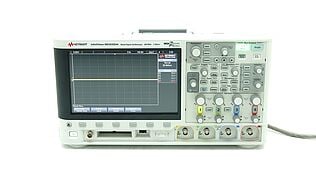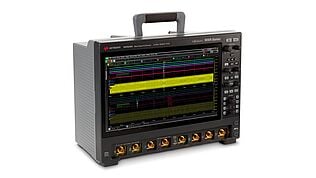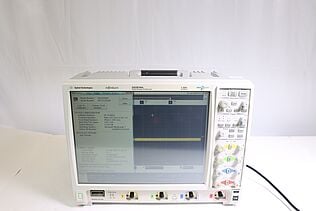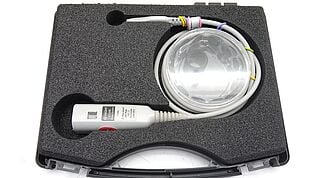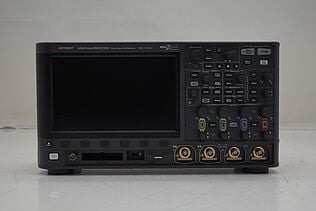- Introduction
- What Constitutes a Transient?
- Parameters to Describe Transients
- Types of Transients
- Voltage Transients
- Current Transients
- Oscillatory Transients
- Causes of Transients
- Switching Operations
- Inductive Loads
- Capacitive Changes
- External Factors
- Effects of Transients
- Circuit Damage
- Data Corruption
- Reduced System Life
- Measuring Transients
- Tools for Measuring Transients
- Techniques for Effective Measurement
- Transient Suppression Techniques
- Transient Types, Causes, Effects, and Tools Guide
- Conclusion
- Whenever You’re Ready, Here Are 5 Ways We Can Help You
Imagine fine-tuning a circuit for hours, only to have it rendered useless by a microsecond-long voltage spike.
For electrical engineers who deal with complex circuits and systems, transients are not just theoretical concepts but real-world events that can disrupt operations, damage components, or induce unexpected behavior.
In this comprehensive guide, we will delve into the fast-paced world of electrical transients: what they are, how they manifest, and most importantly, how to measure and manage them effectively.
What Constitutes a Transient?
A transient event in electronics involves abrupt changes in voltage or current conditions. These changes occur for a limited duration, typically in the order of microseconds or milliseconds. Transients can take the form of:
- Voltage spikes
- Current surges
- Damped oscillations
| Key Takeaway |
|---|
| Transients in electronics serve as quick, unexpected changes in voltage or current that can significantly impact system performance and component lifespan. Properly identifying and understanding these events is crucial for preventing damage and ensuring operational reliability. |
Empower Your Projects With a Used Keysight Oscilloscope




Need Tech Support?
Not sure which model perfectly fits your application needs? Get in touch and let our experts help you.





































Select up to 3 instruments to compare
Parameters to Describe Transients
When analyzing a transient, consider the following 4 key parameters:
- Amplitude: The maximum value that the transient achieves.
- Duration: The time interval over which the transient persists.
- Frequency: In the case of oscillatory transients, the rate at which the oscillation occurs.
- Rise time/fall time: The time taken for the transient to rise or fall between specified reference points.
Types of Transients
Understanding transients starts with categorizing them into their basic types. Not all transients are created equal, and their distinctions lie in how they affect voltage, current, or oscillatory conditions.
Voltage Transients
Voltage transients are rapid changes in voltage levels that can significantly exceed or fall below the nominal operating voltage of a circuit. They are often categorized into:
- Positive voltage spikes: These are abrupt rises in voltage that exceed the regular operational levels.
- Negative voltage dips: Also known as 'sags', these are abrupt reductions in voltage.
- Repetitive: Occur periodically, such as those produced by power line interference.
- Random: Occur unpredictably, often due to external factors like lightning or grid instability.
Engineers monitor voltage transients closely as they can cause insulation breakdown in devices, leading to immediate or gradual failure.
Typical Sources:
- Rapid switching in digital circuits
- Inrush current during capacitor charging
- Switching power supplies
Current Transients
Current transients are rapid changes in the current flowing through an electrical component or circuit. They generally occur due to:
- Inductive kickback: Often observed in inductive elements like motors and transformers, this is a sudden spike in current when the inductive element is de-energized.
- Capacitive surge: A sudden inrush of current occurs when a capacitor charges rapidly, especially during power-up conditions.
- Load changes: Sudden addition or removal of loads can cause temporary current transients.
Current transients usually accompany voltage transients and can lead to overheating or even melting of conductors if not managed properly.
Typical Sources:
- Motor startup/shutdown
- Transformer energizing/de-energizing
- Circuit breaker operation
Oscillatory Transients
Oscillatory transients involve periodic fluctuations in voltage or current, often with a decaying amplitude over time. These transients are characterized by:
- Frequency: The rate of oscillation, often determined by the resonant frequency of the circuit.
- Damping factor: This describes how quickly the oscillations decay over time.
- Amplitude: The maximum deviation from the mean value, which can vary over time.
Oscillatory transients are commonly observed in circuits that have both inductive and capacitive elements, forming a resonant circuit.
Typical Sources:
- Resonant circuits
- LC filters
- Reactive components in power systems
By understanding these types of transients in detail, electrical engineers can better design systems to cope with these inevitable but manageable phenomena.
Causes of Transients
The occurrence of transients is seldom random; rather, it is traceable to specific causes that engineers closely examine for mitigation.
Understanding these sources enables more effective diagnostics and preventive strategies. Here's a focused look at these major causes.
Switching Operations
The act of turning devices on or off in electrical circuits can cause transients, especially in high-frequency operations.
This is true for both mechanical and solid-state switches, as well as grid-level operations in power utilities.
These switching activities often result in voltage spikes and inrush currents in connected loads.
Inductive Loads
Devices like motors and transformers inherently resist changes in current due to their inductive nature.
When they experience sudden power changes, they release stored energy in the form of back electromotive force (EMF).
This inductive kickback can cause transient voltage spikes that may require specialized protection mechanisms.
Capacitive Changes
Capacitors contribute to transients when they experience sudden charging or discharging, commonly observed during power-up sequences of electronic devices.
These capacitive transients can lead to overshooting in voltage levels and may even compromise the stability of feedback systems.
External Factors
Factors outside circuit design, such as lightning strikes, electromagnetic interference (EMI), and grid fluctuations, can also induce transients.
These external factors can lead to catastrophic device failure and may induce errors in data or operational behavior.
Understanding these causes enables engineers to foresee potential transient events and implement appropriate safeguards to mitigate their impacts.
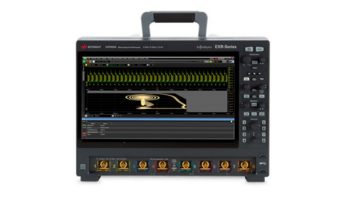
Effects of Transients
Not all transients are harmful, but the ones that are can wreak havoc on electrical systems. Their impact can range from immediate damage to long-term degradation.
Here's a closer look at some key effects of transients.
Circuit Damage
- Component failure: High-amplitude transients can exceed the voltage or current ratings of components, leading to immediate burnout or failure.
- Insulation breakdown: Transients can compromise the insulation of wires and components, leading to shorts or circuit interruptions.
- Overheating: Prolonged exposure to transients can cause excessive heat, further exacerbating component damage.
Data Corruption
- Signal integrity: Transients can introduce noise into data lines, affecting the quality and integrity of transmitted signals.
- False triggering: In digital circuits, a voltage transient can be mistaken for a legitimate signal, causing unintended operations.
- Memory errors: In computing and data storage systems, transients can flip bits, leading to data corruption or system crashes.
Reduced System Life
- Material fatigue: Continuous exposure to minor transients can lead to material degradation over time, reducing the lifespan of components.
- Operational instability: Persistent transients can result in system instability, requiring frequent maintenance and potentially leading to system failure.
- Economic impact: The cumulative effects of transients, if not managed, can result in higher costs due to frequent replacements and downtime.
Understanding these effects allows engineers to better assess the risks associated with transients and implement preventive measures to mitigate their impact.
Measuring Transients
Accurate measurement of transients iscritical for both diagnostic and preventive approaches in electrical engineering.
By employing specialized tools and techniques, engineers can precisely characterize these fast phenomena to implement effective mitigation strategies.
Tools for Measuring Transients
- Oscilloscopes: Oscilloscopes are the go-to instruments for capturing transient waveforms in real-time. They allow engineers to visualize voltage and current changes over time, providing immediate insights into transient behavior.
- Transient recorders: Unlike oscilloscopes, transient recorders focus on logging transient events for subsequent analysis. They are particularly useful for capturing infrequent or random transients that may not be easily observable in real-time.
- Spectrum analyzers: Spectrum analyzers break down the transient signal into its frequency components. By examining these frequencies, engineers can gain insights into the causes and potential impacts of the transient.
Techniques for Effective Measurement
- Bandwidth considerations: Ensure that the measurement system has adequate bandwidth. The bandwidth must be high enough to capture the highest frequency components of the transient without distortion.
- Oscilloscope settings: Adjust the oscilloscope settings to suit the transient being measured. This includes setting the appropriate trigger level and time scale to accurately capture the transient waveform.
- Data logging: For capturing repetitive transients, set up the oscilloscope or transient recorder to log data over time. This enables a more detailed analysis and helps in recognizing patterns that might point to specific issues or causes.
- Signal integrity: Ensure that the measurement setup itself does not introduce noise or artifacts that could compromise the accuracy of transient measurement.
By using these specialized tools and techniques, engineers can not only identify and measure transients but also develop effective strategies for their mitigation.
Transient Suppression Techniques
- Surge protectors: Divert excess voltage away from sensitive components.
- Ferrite beads: Suppress high-frequency noise.
- Inductors and capacitors: Filter out transients in power lines.
- Snubber circuits: Dampen oscillatory transients.
Transient Types, Causes, Effects, and Tools Guide
| Type of Transient | Common Causes | Key Effects | Recommended Measurement Tools |
|---|---|---|---|
| Voltage Transient | Switching operations, inrush currents, power line interference | Component failure, insulation breakdown | Oscilloscope, transient recorder, spectrum analyzer |
| Current Transient | Motor start/stop, transformer energizing, circuit breaker operation | Overheating, conductor melting | Oscilloscope, transient recorder |
| Oscillatory Transient | Resonant circuits, LC filters, reactive components | Signal distortion, stability issues | Spectrum analyzer, Oscilloscope |
Browse Our Selection of Used Oscilloscopes





+15% Special Education Discount
Explore our certified used equipment, with up to 5 years warranty and an additional 15% discount exclusively for educators and researchers.





































Select up to 3 instruments to compare
Enable Notifications
In order to use this feature, you need to enable notifications.
Manage notification preferences
Conclusion
Transients in electronics are not just phenomena to observe but challenges to understand, measure, and mitigate.
Whether they manifest as voltage spikes, current surges, or oscillatory patterns, these fast occurrences can have long-lasting impacts on system performance and reliability.
Armed with the right knowledge about their types, causes, and effects, engineers can select the appropriate tools for effective measurement and analysis.
Ready to take your transient measurements to the next level? Visit Keysight Used Equipment Store for premium used oscilloscopes, spectrum analyzers, function generators, and multimeters.
These high-quality instruments provide the accuracy and reliability you need for in-depth transient analysis.
Don't let transients disrupt your systems; equip yourself with the best tools to analyze and tackle them head-on.

Whenever You’re Ready, Here Are 5 Ways We Can Help You
- Browse our Premium Used Oscilloscopes.
- Call tech support US: +1 800 829-4444
Press #, then 2. Hours: 7 am – 5 pm MT, Mon– Fri - Talk to our sales support team by clicking the icon (bottom right corner) on every offer page
- Create an account to get price alerts and access to exclusive waitlists.
- Talk to your account manager about your specific needs.

